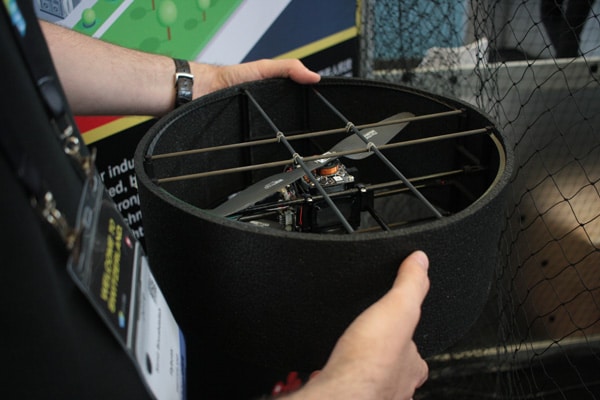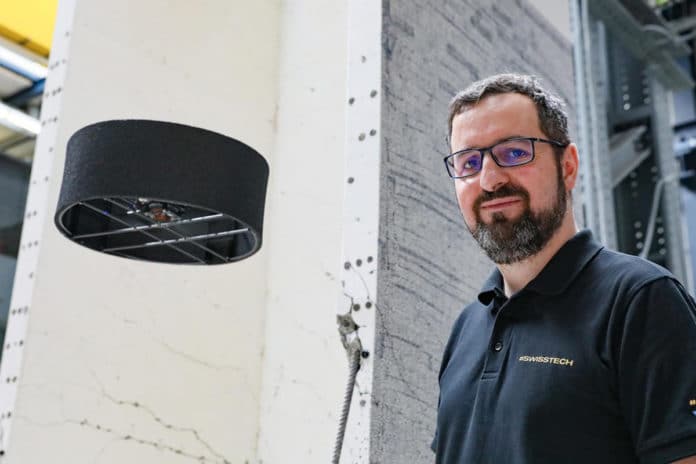EPFL startup Flybotix has come up with an inventive propulsion system modeled after those used by helicopters. It cleverly combines the mechanical multi-rotor simplicity with the aerodynamic efficiency of conventional helicopters, giving control to advanced algorithms.
Drones are getting more advanced day by day, but battery life still remains an issue. Most professional multi-rotor drones offer good battery life, which is almost 30 minutes. But there is no chance of getting close or entering confined spaces. On the contrary, the most compact and anti-collision drones have those properties, but they have a limited flight time, which results from their heavy batteries and relatively inefficient propellers. Hence, for longer missions, the drone’s battery needs to be regularly recharged or replaced.
The Flybotix drone, on the other hand, manages to combine the two qualities in a single device. The Flybotix drone – which does not yet have a definitive name – is a double rotor version without servomotors, also suited for interior inspections.

The smaller the size of the machine, the less time it can spend in the air. “Drones with four rotors are highly stable, making them reliable and easy to use,” says Samir Bouabdallah, CEO of Flybotix. But their propellers become increasingly inefficient as these drones get smaller.
For increasing the flying time of these small drones, we can reduce the number of propellers from four to two, for instance, engineers can make each propeller longer and the rotor more efficient. This could also cut the amount of power required, which means with the same size battery can run for longer.
However, drones with two propellers were generally less stable and harder to manipulate. On the other hand, the Flybotix drone employs a ring-like structure, having around 30-centimeter diameter – in which the propellers are stacked on top of each other in the center and turn in opposite directions. This new design looks much different from machines we’re used to seeing.
One more interesting feature is its stabilization system. The team has developed an algorithm that offsets the two rotating forces and serves the same function as a helicopter’s transmission system. Therefore, the drone can be piloted just as easily as quadcopters, using a conventional remote-control device.
With its unique transmission system and foam covering its outer ring, the drone can bounce off of obstacles without breaking. The company has decided first to target inspecting dangerous or hard-to-reach areas.
Flybotix will sell its product to inspection service companies, operating in the energy and mining sectors.
According to data provided by Flybotix, the startup intends to ship 300,000 units in 2021 and over 500,000 in 2022. This would result in revenues of nearly $ 10 million in revenue in 2022 and represent about 1.5 / 2% of market share. Companies in the sector increasingly choose professional drones (for ease of use and mapping) and more flight time (to collect more data), with demand dominated by China and the United States.
